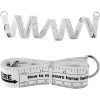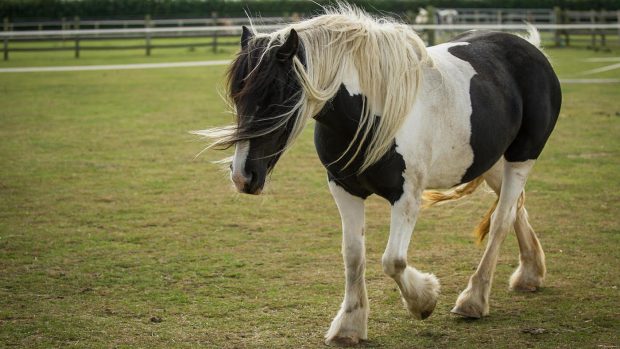With rates of obesity thought to be as high as 70% in some populations of ponies, it’s invariably weight loss rather than weight gain that’s needed to keep most of our horses healthy and this means cutting back on the availability of grass to them.
Excess weight can significantly increase the risk of horses and ponies developing laminitis, alongside causing other potential problems ranging from insulin dysfunction to being unable to perform at their best, whether that’s on a relaxing hack or while out competing.
Tips to help you take control of your horse’s weight
1. Use winter wisely every year and allow your horse to lose weight naturally. Being able to see your horse’s ribs is healthy as you enter spring and will give some scope for natural weight gain when the grass starts to grow.
2. Restrict grazing because grass in its growing stages is highly calorific:
- Consider turning out overnight when there is likely to be less water-soluble carbohydrate (WSC sugar and fructan) in the grass, but keep an eye on the amount of time you turn your horse out for as the lower level of WSC may be negated if you are turning them out for 16 hours rather than eight hours during the day
- Strip graze to restrict the amount of accessible grass and consider back fencing to make grazing restriction more effective.
- Consider implementing a track system to reduce grass intake and encourage movement.
- Turn out for longer on sparser paddocks with lower quality grazing rather than on lush pasture for a limited time, to prevent binge eating.
- Try a grazing muzzle remembering to introduce it carefully and not use it for more than 12 hours per day. Ensure it’s worn for the duration of your horse being turned out to avoid compensatory eating once the muzzle has been removed.
3. Assess faecal output daily to check for changes in pasture intake when you have restricted the grazing. The latest research suggests you need to see a decrease of around half to result in weight loss if the horse previously had unrestricted access to pasture.
4. Don’t use rugs unnecessarily – very few horses need them in summer, even if it’s raining! Instead allow your horse to naturally shake off a few pounds by keeping themselves warm, as nature intended.
5. Feed alternative forage to horses and ponies at very high risk of laminitis. Ideally remove them from pasture altogether and feed a suitable forage/short chopped fibre, preferably one of the feeds that has been approved by the Laminitis Trust.
6. Invest in forage analysis to make sure you know the nutrient and WSC content of the hay or haylage you plan to use for your weight loss programme.
7. Weigh forage before feeding having first discussed with your vet the appropriate percentage bodyweight ration your horse needs to promote weight loss (if soaking start with 20% more dry weight as some dry matter will be lost post soaking). Consider using a slow feeder to extend eating time.
8. Increase exercise to a minimum of 25 minutes (including 15 minutes at brisk trot) five times a week to help keep your horse’s waistline in check and support a healthy metabolism.
9. Provide nutritional support to ensure your horse has a balanced diet. The latest research recommends that a low calorie, protein, vitamin and mineral supplement or balancer should always be included in the diet of horses on restricted forage.
10. Monitor your horse’s weight by regularly reviewing your weight loss programme with your vet or nutritionist. Use a weighbridge for accuracy and then assess and record weight weekly using body condition scoring and a weigh tape (like this one on Amazon).
You might also be interested in:

Grazing muzzles – what are your options?

11 small-holed haynets and slow feeders to extend eating time and reduce wastage

‘The figures don’t lie’: weight gain more than doubles risk of laminitis
It was also found that some management strategies, such as restricting grazing, increased the laminitis risk

23 feeds suitable for horses prone to laminitis

Subscribe to Horse & Hound magazine today – and enjoy unlimited website access all year round
Horse & Hound magazine, out every Thursday, is packed with all the latest news and reports, as well as interviews, specials, nostalgia, vet and training advice. Find how you can enjoy the magazine delivered to your door every week, plus options to upgrade your subscription to access our online service that brings you breaking news and reports as well as other benefits.




